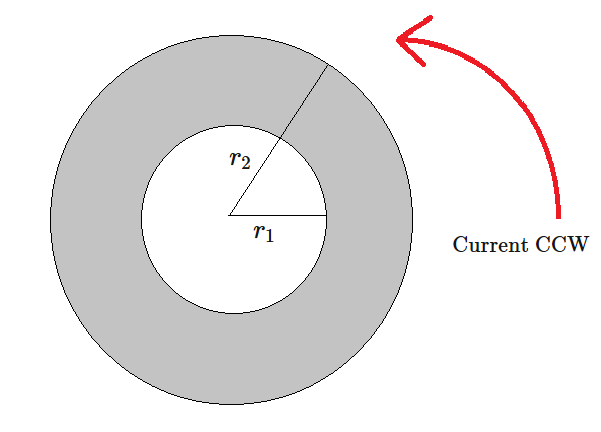Magnetic Field from Current Doughnut

A thin, flat "doughnut"-shaped piece of metal with inner radius and outer radius carries a total current which circulates in the counter-clockwise direction. The current is uniformly distributed over the doughnut's area.
What is the magnitude of the magnetic flux density at the center of the doughnut (in micro-Teslas )?
Details and Assumptions:
Bonus: How does this compare to the strength of the Earth's magnetic field at the Earth's surface?
The answer is 41.888.
This section requires Javascript.
You are seeing this because something didn't load right. We suggest you, (a) try
refreshing the page, (b) enabling javascript if it is disabled on your browser and,
finally, (c)
loading the
non-javascript version of this page
. We're sorry about the hassle.
Represent the doughnut as a combination of current loops. In general, the B-field at the center of a single current-carrying loop is:
B = 2 R μ 0 I
Total area:
A = π ( r 2 2 − r 1 2 )
Infinitesimal ring area:
d A = 2 π r d r
Infinitesimal ring current (assuming total current is I ):
d I = I π ( r 2 2 − r 1 2 ) 2 π r d r = r 2 2 − r 1 2 2 I r d r
Magnetic flux density contribution at center:
d B = 2 r μ 0 d I = 2 r μ 0 r 2 2 − r 1 2 2 I r d r d B = r 2 2 − r 1 2 μ 0 I d r
Total magnetic flux density:
B = r 2 2 − r 1 2 μ 0 I ∫ r 1 r 2 d r = r 2 2 − r 1 2 μ 0 I ( r 2 − r 1 ) ≈ 4 1 . 8 8 8 μ T